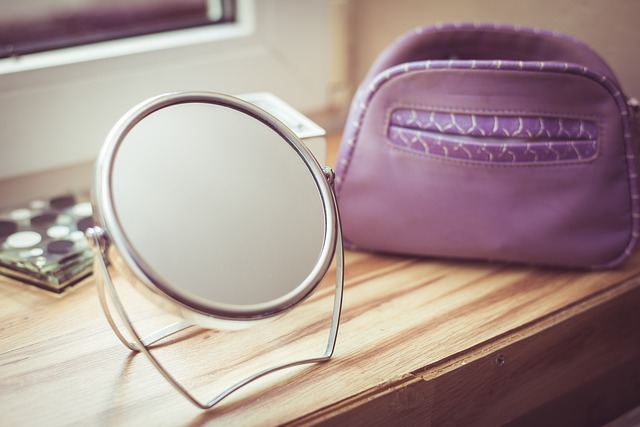Botox for crow's feet has gained popularity as a non-invasive procedure to minimize dynamic wrinkles around the eyes, with its ability to temporarily paralyze muscle groups and prevent wrinkle formation. As demand grows, ongoing research and development focus on advanced formulations and safer delivery methods. While modern techniques offer improved precision and reduced side effects, misuse or over-injection poses risks such as asymmetry and prolonged recovery. Ethical considerations, including informed consent and transparent communication, are crucial as Botox for crow's feet becomes more accessible to ensure patient safety and well-being alongside effective anti-aging solutions.
“Unraveling the future of anti-aging aesthetics, this article explores groundbreaking advancements in Botox treatments. From its established role in reducing crow’s feet to emerging trends across the industry, we delve into the science behind botulinum toxin.
We examine how future innovations promise enhanced efficacy and safety for Botox procedures, addressing ethical considerations. As technology advances, these treatments are set to revolutionize aesthetics, offering tailored solutions for a youthful appearance.”
Understanding Botox: The Science Behind Crow's Foot Reduction
Botox has become a go-to solution for those seeking to reduce the appearance of fine lines and wrinkles, particularly around the eyes. At its core, Botox is a protein produced by bacteria that, when injected into specific muscle groups, temporarily paralyzes them. This disruption prevents the repeated contraction that forms wrinkles, especially the vertical lines between the eyebrows and the horizontal creases at the outer corners of the eyes—commonly known as crow’s feet.
The science behind Botox’s effectiveness in crow’s foot reduction is rooted in its ability to disrupt the muscle movement responsible for these fine lines. By blocking nerve signals to specific muscles, Botox smoothes out the skin, creating a more youthful appearance. As with any medical procedure, it’s essential to consult with a qualified professional who can determine the optimal treatment plan based on individual needs and skin conditions.
Current Trends in Anti-Aging Treatments
In today’s quest for youthful appearances, anti-aging treatments have evolved significantly, with Botox for crow’s feet becoming one of the most sought-after procedures. This trend reflects a growing demand for non-invasive solutions to combat the signs of aging. The current landscape is marked by an increased focus on natural, minimally invasive techniques that offer long-lasting results.
Botox has emerged as a game-changer in the industry, providing a temporary yet effective fix for fine lines and wrinkles, particularly around the eyes. Its popularity stems from its ability to relax facial muscles, reducing dynamic wrinkle formation. As research progresses, scientists are constantly developing new formulations and techniques, ensuring safer and more precise treatments. This trend shows no signs of slowing down, as individuals seek ways to maintain their youthful radiance.
Future Innovations: Enhancing Botox Procedures
The future of Botox holds immense potential, especially in addressing one of the most common concerns—crow’s feet. Researchers are constantly exploring innovative ways to enhance the effectiveness and convenience of this popular anti-aging treatment. One promising direction is the development of advanced formulations that can target specific muscle groups with greater precision. This technology could lead to more tailored results, allowing for the smoothening of fine lines and wrinkles around the eyes without affecting other areas.
Additionally, recent advancements in delivery methods are making Botox treatments even less invasive and more patient-friendly. Improved injection techniques and potentially non-invasive alternatives, such as topical creams or transdermal patches, could revolutionize the way Botox is administered. These innovations aim to make the procedure quicker, safer, and more accessible, ensuring that individuals seeking to reduce crow’s feet and other signs of aging have even more options in the future.
Safety and Ethical Considerations for Advanced Botox Applications
As Botox continues to evolve, advancements in its application for treating signs of aging, such as crow’s feet, raise important safety and ethical concerns. While modern techniques offer more precise targeting and reduced side effects, off-label use and individual patient variability necessitate caution. The potential for misuse or over-injection could lead to complications, including asymmetry, muscle weakness, and prolonged recovery periods.
Ethical considerations also come into play with advanced Botox applications. As treatments become more accessible and popular, ensuring informed consent and transparent communication about risks and benefits becomes crucial. Healthcare professionals must strike a balance between providing effective anti-aging solutions and upholding ethical standards to protect patient safety and well-being.
As we look towards the future, advancements in Botox technology promise to redefine anti-aging treatments. With ongoing research focusing on refining existing techniques and exploring innovative applications, such as enhanced crow’s foot reduction, individuals can anticipate more effective and safer options. However, as these advanced procedures become available, careful consideration of safety and ethical guidelines will be essential to ensure their responsible use in the pursuit of youthful appearance.
